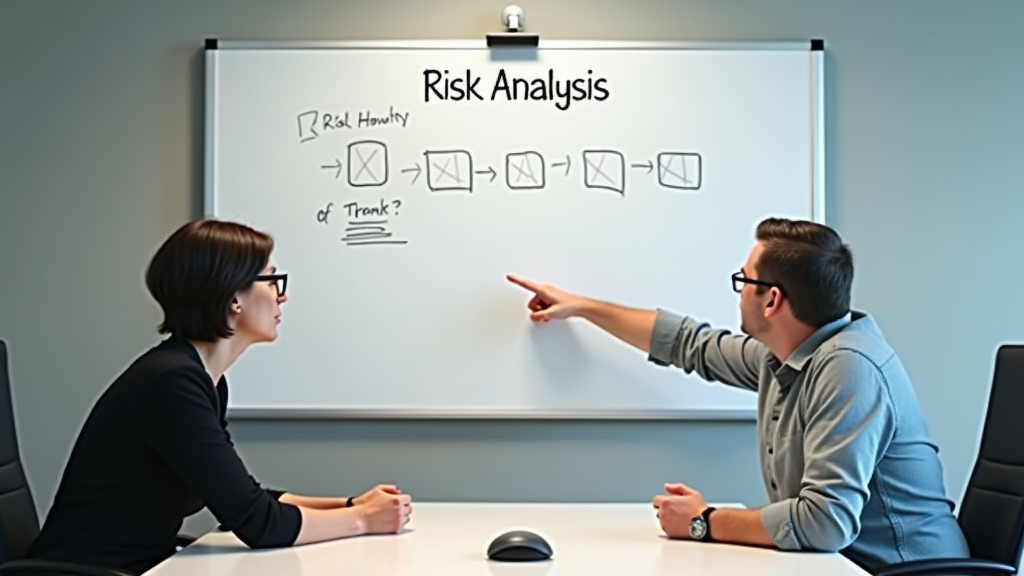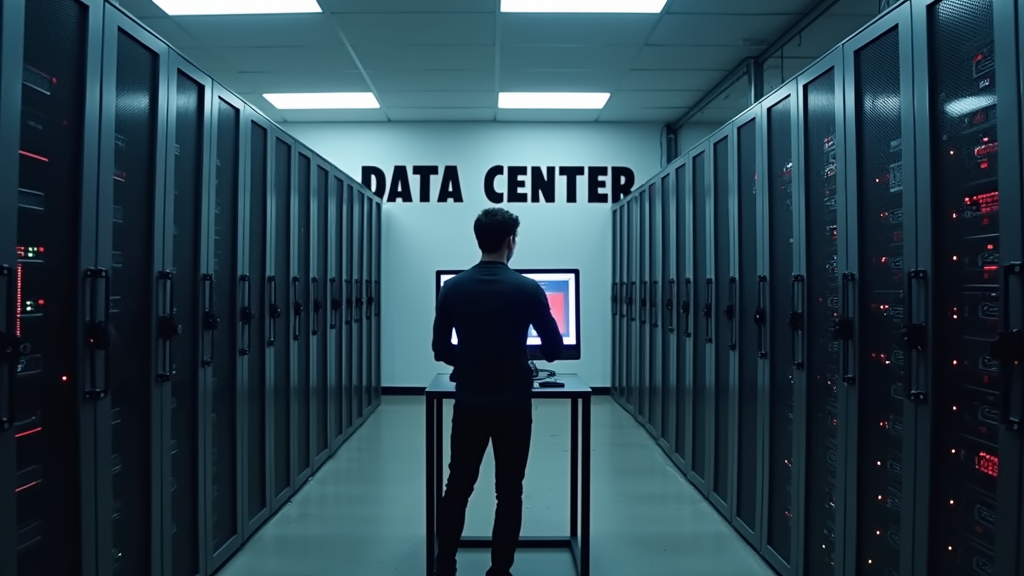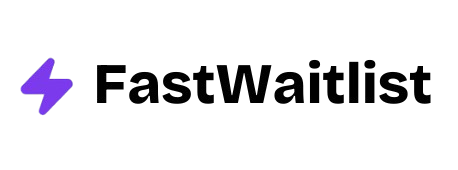
In the fast-growing world of Software as a Service (SaaS), ensuring the quality and reliability of cloud-based solutions is crucial. This guide dives deep into SaaS validation, covering its importance, process, challenges, and best practices. Whether you're a SaaS provider or a business considering cloud solutions, understanding validation is key to success in this digital age.
Understanding SaaS and Validation
What is Software as a Service (SaaS)?
Software as a Service, commonly known as SaaS, is a software delivery model where applications are hosted by a vendor and made available to customers over the internet. Instead of installing and maintaining software locally, users can access it via a web browser, eliminating the need for complex software and hardware management on the customer's end.
Popular examples of SaaS solutions include Salesforce for customer relationship management, Google Workspace for productivity tools, and Slack for team communication. These platforms offer several benefits to businesses, such as reduced IT costs, scalability, and automatic updates.
SaaS has revolutionized how companies use software, making powerful tools accessible to businesses of all sizes. The flexibility and cost-effectiveness of SaaS have led to its widespread adoption across various industries.
The Importance of Validation in SaaS
Validation in the context of SaaS refers to the process of ensuring that a software system meets specified requirements and fulfills its intended purpose. It's a critical step in software development and deployment, especially for SaaS platforms that handle sensitive data or operate in regulated industries.
Regulatory bodies like the FDA have set standards such as 21 CFR Part 11, which requires validation of systems to "ensure accuracy, reliability, consistent intended performance, and the ability to discern invalid or altered records." While this regulation specifically targets the pharmaceutical and medical device industries, its principles apply broadly to SaaS validation.
The benefits of validation extend to both SaaS providers and users:
-
For providers, validation demonstrates the reliability and quality of their product, building trust with customers and potentially opening doors to regulated markets.
-
For users, validated SaaS solutions offer assurance that the software will perform consistently and meet their business needs while complying with relevant regulations.
Validation is not a one-time event but an ongoing process that continues throughout the lifecycle of a SaaS product. It helps identify and address issues early, reducing the risk of costly errors or compliance violations down the line.
The SaaS Validation Process
Planning and Preparation
The first step in SaaS validation is thorough planning. This phase sets the foundation for the entire validation process and involves defining clear objectives, identifying key stakeholders, and creating a comprehensive validation plan.
Defining validation objectives requires a deep understanding of both the SaaS product and the regulatory landscape it operates in. Objectives might include ensuring data integrity, maintaining system security, or meeting specific industry standards.
Identifying stakeholders is crucial as validation often involves multiple teams, including development, quality assurance, compliance, and sometimes even end-users. Each stakeholder brings a unique perspective and set of requirements to the validation process.
The validation plan serves as a roadmap for the entire process. It outlines the scope of validation, methodologies to be used, resources required, and timelines. A well-crafted plan ensures that all aspects of validation are addressed systematically and efficiently.
Risk Assessment
Risk assessment is a critical component of SaaS validation. It involves identifying potential risks associated with the software, evaluating their severity and likelihood, and developing strategies to mitigate these risks.
The risk assessment process typically starts with a brainstorming session involving various stakeholders. They identify potential failure modes, their causes, and possible effects on system performance or user safety. Each identified risk is then evaluated based on its severity and probability of occurrence.
Once risks are identified and evaluated, the team develops mitigation strategies. These might include additional testing procedures, implementing new security measures, or modifying certain features of the software. The goal is to reduce risks to an acceptable level.

Requirements Gathering and Documentation
Gathering and documenting requirements is a fundamental step in SaaS validation. This phase involves creating a User Requirements Specification (URS) document, which outlines what the system should do from the user's perspective.
The URS should cover both functional and non-functional requirements. Functional requirements describe what the system should do, such as specific features or capabilities. Non-functional requirements relate to how the system should perform, including aspects like performance, security, and usability.
A traceability matrix is often used to link requirements to specific tests or validation activities. This tool ensures that all requirements are tested and validated, providing a clear overview of the validation process.
Design and Configuration
The design and configuration phase translates user requirements into system specifications. This involves creating detailed system design documentation and configuration specifications.
System design documentation outlines the technical architecture of the SaaS solution, including database structures, APIs, and integration points. Configuration specifications detail how the system should be set up to meet user requirements.
Change management procedures are also established during this phase. These procedures ensure that any changes to the system are properly documented, reviewed, and approved before implementation.
Testing and Verification
Testing is at the heart of the validation process. It typically involves three main stages:
-
Installation Qualification (IQ): This stage verifies that the software is installed correctly and all necessary components are present.
-
Operational Qualification (OQ): OQ tests the system's functionality to ensure it operates as intended under normal and some abnormal conditions.
-
Performance Qualification (PQ): PQ evaluates the system's performance in real-world conditions, often involving end-users to ensure it meets their needs.
Each stage involves executing predefined test scripts, documenting results, and addressing any issues that arise. Automated testing tools are often used to streamline this process, especially for regression testing during updates.
Reporting and Approval
The final phase of validation involves compiling test results, preparing summary reports, and obtaining final approval. Test summary reports provide an overview of all testing activities, including any deviations or issues encountered and how they were resolved.
The validation summary report is a comprehensive document that brings together all aspects of the validation process. It includes an overview of the validation approach, summaries of all validation activities, and a statement of compliance with predefined requirements.
Final approval typically involves a formal review process where key stakeholders sign off on the validation results. This step officially declares the SaaS solution as validated and ready for use.
Challenges in SaaS Validation
Frequent Updates and Changes
One of the biggest challenges in SaaS validation is keeping up with frequent updates and changes. Unlike traditional software, SaaS solutions often follow a continuous deployment model, with updates rolled out regularly.
This rapid pace of change can make it difficult to maintain a validated state. Each update potentially introduces new features or changes that need to be validated. SaaS providers must develop strategies to manage these frequent changes without compromising the validated status of their system.
Continuous validation approaches, where validation is integrated into the development and deployment pipeline, can help address this challenge. This might involve automated testing suites that run with each update, ensuring core functionalities remain intact.
Multi-tenancy Concerns
Many SaaS platforms use a multi-tenant architecture, where a single instance of the software serves multiple customers or "tenants." While this model offers efficiency and scalability benefits, it also presents unique validation challenges.
Data segregation and security are paramount in multi-tenant systems. Validation must ensure that each tenant's data remains isolated and secure, even as the system undergoes updates or configuration changes.
Balancing customization with standardization is another challenge. While tenants may require specific configurations, too much customization can complicate the validation process. SaaS providers must find ways to offer flexibility without sacrificing the ability to maintain a validated state across all tenants.
Third-party Integrations
Modern SaaS solutions often integrate with various third-party services and APIs. These integrations extend functionality but also introduce additional complexity to the validation process.
Validating external components that are not under direct control of the SaaS provider can be challenging. It requires clear communication and coordination with third-party vendors to ensure their components meet necessary standards and don't compromise the overall system validation.
Maintaining end-to-end validation across integrated systems is crucial. This often involves developing comprehensive test scenarios that cover not just the core SaaS platform but also its interactions with all integrated services.
Scalability and Performance
As SaaS solutions grow in popularity, ensuring consistent performance under varying load conditions becomes a critical validation concern. Validation must account for scalability, testing the system's ability to handle increased user loads without degradation in performance or functionality.
Performance testing under various scenarios is essential. This might include simulating peak usage times, testing with large datasets, or assessing system behavior during rapid scaling events.
Ensuring consistent performance across all users, regardless of their location or specific configuration, is another challenge. Validation processes must account for these variables to guarantee a uniform user experience.
Best Practices for SaaS Validation
Adopt a Risk-Based Approach
A risk-based approach to validation focuses resources on the most critical aspects of the system. This strategy involves identifying high-risk areas that could have significant impacts on safety, efficacy, or regulatory compliance.
By prioritizing validation efforts based on risk, SaaS providers can ensure that the most important functionalities receive the most thorough testing and validation. This approach is particularly valuable when dealing with limited time or resources.
Implementing a risk-based approach requires a deep understanding of both the SaaS product and its use cases. Regular risk assessments should be conducted to identify new or changing risks as the product evolves.
Implement Continuous Validation
Continuous validation aligns with the agile, iterative nature of SaaS development. This approach integrates validation activities into the ongoing development and deployment process, rather than treating it as a separate, point-in-time event.
Automated testing strategies play a crucial role in continuous validation. By developing comprehensive automated test suites, SaaS providers can quickly verify that core functionalities remain intact after each update or change.
Regression testing becomes particularly important in a continuous validation model. It ensures that new changes or features don't negatively impact existing, validated functionalities. Automated regression tests can be run frequently, providing ongoing assurance of system integrity.
Leverage Cloud-Native Tools
Cloud-native tools can significantly enhance the efficiency and effectiveness of SaaS validation. These tools are designed to work seamlessly in cloud environments and can provide valuable insights into system performance and behavior.
Cloud monitoring and logging tools offer real-time visibility into system operations. They can help identify issues quickly and provide data to support validation activities. Some tools even use AI to detect anomalies or predict potential problems before they occur.
Infrastructure as Code (IaC) is another powerful concept for SaaS validation. By defining infrastructure configurations in code, providers can ensure consistency across environments and easily replicate validated configurations.
Establish Clear Communication Channels
Effective communication is vital for successful SaaS validation. Clear channels should be established between the SaaS provider and customers, as well as among internal teams involved in development, quality assurance, and compliance.
Regular updates to customers about validation status, upcoming changes, and any potential impacts help build trust and ensure smooth operations. For regulated industries, this communication might include sharing validation documentation or coordinating customer-specific validation activities.
Internally, cross-functional communication ensures that all teams are aligned on validation requirements and processes. This might involve regular meetings, shared documentation platforms, or collaborative tools to track validation activities.
Document Everything
Comprehensive documentation is a cornerstone of effective SaaS validation. Every aspect of the validation process should be meticulously documented, from initial planning to final approval.
Maintaining detailed validation records serves multiple purposes. It provides evidence of compliance for audits or regulatory inspections, serves as a reference for future validation activities, and helps in troubleshooting if issues arise.
Version control for documentation is crucial, especially in the fast-paced SaaS environment. Each version of the software should have corresponding validation documentation, allowing for easy tracking of changes over time.
Entrepreneurs looking to validate their SaaS ideas quickly can leverage platforms like FastWaitlist. These tools help gauge market interest and collect valuable feedback before full development, aligning with the principles of lean startup methodology.
Regulatory Considerations for SaaS Validation
Industry-Specific Regulations
Different industries have specific regulations that impact SaaS validation requirements. Understanding and complying with these regulations is crucial for SaaS providers serving these sectors.
In healthcare, regulations like HIPAA in the United States and GDPR in Europe set strict standards for protecting patient data. SaaS solutions in this space must validate their ability to maintain data privacy and security in compliance with these regulations.
Financial services face regulations such as SOX (Sarbanes-Oxley Act) and PCI DSS (Payment Card Industry Data Security Standard). These focus on financial reporting accuracy and protecting sensitive financial information.
The life sciences industry, including pharmaceuticals and medical devices, is subject to GxP regulations and FDA 21 CFR Part 11. These regulations set stringent requirements for data integrity, system security, and validation documentation.
Data Privacy and Security
Data privacy and security are paramount in SaaS validation, regardless of the specific industry. Validation processes must ensure that the system adequately protects sensitive information from unauthorized access or breaches.
Encryption and access controls are key areas of focus. Validation should verify that data is encrypted both in transit and at rest, and that access controls are properly implemented to restrict data access to authorized users only.
Data residency and sovereignty considerations are increasingly important, especially for global SaaS providers. Validation may need to address requirements for storing data in specific geographic locations or complying with local data protection laws.

Audit Trails and Electronic Signatures
Many regulations require the implementation of audit trails to track user actions and system changes. Validation should ensure that these audit trails are comprehensive, tamper-proof, and easily retrievable for inspection.
Electronic signatures are often used in place of traditional handwritten signatures, especially in regulated industries. Validation must verify that electronic signature systems meet regulatory requirements for authenticity, integrity, and non-repudiation.
The Role of Automation in SaaS Validation
Automated Testing Tools
Automation plays a crucial role in modern SaaS validation, particularly in the realm of testing. Automated testing tools can significantly speed up the validation process while improving accuracy and consistency.
Continuous Integration/Continuous Deployment (CI/CD) pipelines often incorporate automated tests. These tests can be run automatically with each code change, providing immediate feedback on potential issues.
Test case management systems help organize and track the execution of test cases. They can integrate with automated testing tools to provide a comprehensive view of test coverage and results.
Validation-as-Code
The concept of Validation-as-Code extends the principles of Infrastructure as Code to the validation process itself. This approach involves defining validation requirements and test cases in code, which can then be version-controlled and automatically executed.
Infrastructure validation ensures that the underlying cloud infrastructure meets specified requirements. This might include verifying network configurations, security settings, or resource allocations.
Configuration validation checks that the SaaS application is configured correctly according to defined specifications. This can include user roles, system settings, or integration configurations.
AI and Machine Learning in Validation
Artificial Intelligence (AI) and Machine Learning (ML) are increasingly being applied to SaaS validation. These technologies can enhance various aspects of the validation process, from risk assessment to anomaly detection.
Predictive analytics powered by AI can help in risk assessment by analyzing historical data to identify potential areas of concern. This can help focus validation efforts on the most critical or vulnerable parts of the system.
Anomaly detection algorithms can monitor system behavior in real-time, flagging unusual patterns that might indicate issues. This can be particularly valuable for maintaining ongoing validation in production environments.
Case Study: SaaS Validation in Action
Company Background
Consider a hypothetical SaaS company, HealthTech Solutions, which provides an electronic health record (EHR) system for small to medium-sized healthcare providers. Their cloud-based solution handles sensitive patient data and must comply with HIPAA regulations.
Validation Challenges Faced
HealthTech Solutions faced several challenges in validating their SaaS platform:
- Ensuring HIPAA compliance across all aspects of the system
- Managing frequent updates while maintaining a validated state
- Validating integrations with various third-party services, including lab systems and billing providers
- Scaling validation processes as the customer base grew rapidly
Implemented Solutions
To address these challenges, HealthTech Solutions implemented the following strategies:
- Adopted a risk-based approach, focusing validation efforts on high-risk areas related to patient data security and privacy
- Implemented a continuous validation process, integrating automated testing into their CI/CD pipeline
- Developed a comprehensive validation plan that included both automated and manual testing procedures
- Established clear communication channels with customers about validation status and upcoming changes
- Leveraged cloud-native monitoring tools to track system performance and security in real-time
Results and Lessons Learned
The implemented solutions yielded significant benefits:
- Reduced time required for validation after updates by 60%
- Improved overall system reliability, with a 30% decrease in reported issues
- Successfully passed HIPAA compliance audits with minimal findings
- Increased customer trust, leading to a 25% growth in the customer base
Key lessons learned included the importance of early planning for scalability in validation processes and the value of investing in automation for long-term efficiency.
For SaaS founders looking to validate their product ideas efficiently, tools like FastWaitlist can be invaluable. They allow for quick market testing and user feedback collection, helping refine the product before full-scale development and validation.
Future Trends in SaaS Validation
As technology continues to evolve, so too will the approaches to SaaS validation. Several emerging trends are likely to shape the future of this field:
Blockchain for Immutable Audit Trails
Blockchain technology offers the potential for creating tamper-proof audit trails. This could be particularly valuable in highly regulated industries where the integrity of records is paramount. Blockchain-based validation records could provide an unalterable history of all system changes and validations.
DevSecOps Integration
The integration of security practices into the DevOps process, known as DevSecOps, is likely to become more prevalent in SaaS validation. This approach embeds security considerations and validation checks throughout the development and deployment pipeline, rather than treating them as separate concerns.
Increased Regulatory Focus on Cloud Services
As more critical services move to the cloud, regulators are likely to increase their focus on cloud-based solutions. This could lead to new standards or guidelines specifically tailored to SaaS validation, potentially streamlining the process for providers while ensuring high standards of quality and security.
Conclusion
SaaS validation is a complex but essential process for ensuring the quality, reliability, and compliance of cloud-based software solutions. By understanding the key principles, challenges, and best practices outlined in this guide, SaaS providers and users can navigate the validation process more effectively.
As the SaaS landscape continues to evolve, staying informed about emerging trends and technologies will be crucial. By embracing automation, adopting risk-based approaches, and maintaining clear communication, organizations can ensure their SaaS solutions remain validated and trusted in an increasingly digital world.
